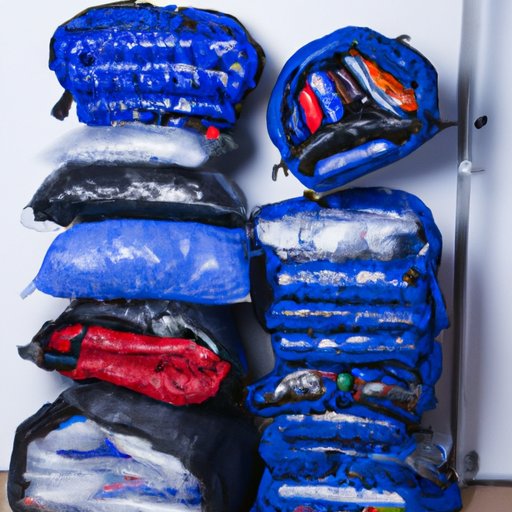Introduction
Storing your sleeping bag correctly is essential for keeping it in prime condition. A well-stored sleeping bag will last longer, be more comfortable and maintain its insulation properties. In this article, we’ll explore the different ways to store sleeping bags and the benefits of each approach.
Hang the Sleeping Bag
One of the best ways to store a sleeping bag is to hang it on a closet rod or other hanging storage device. This prevents the bag from becoming compressed and allows air to circulate around it. It also keeps the bag off the floor, which can help protect it from dirt, dust and moisture.
To hang the sleeping bag, use a hanger with clips that are wide enough to fit around the bag. Alternatively, you can purchase a special hanging storage device, such as a hammock-style organizer or a wall-mounted rack.
Use a Compression Sack
Compression sacks are designed to reduce the size of the sleeping bag, making it easier to store and transport. To use a compression sack, lay the sleeping bag flat and then roll it up tightly. Place the rolled up bag inside the sack and then compress it by tightening the drawstring at the top. This will reduce the volume of the bag and make it easier to store.
When compressing the bag, make sure not to over-tighten it. Doing so can damage the insulation and reduce the effectiveness of the bag. Additionally, make sure to secure the drawstring properly to prevent the contents from spilling out.
Store in a Vacuum Bag
Vacuum bags are made from airtight materials that keep out moisture and dust. To use a vacuum bag, place the sleeping bag inside the bag and then seal the opening using the zipper or velcro closure. Then, connect the vacuum cleaner hose to the valve at the top of the bag and turn on the vacuum. This will remove all the air from the bag and create an airtight seal.
When storing the sleeping bag in a vacuum bag, make sure to check the seal regularly. If the seal is not tight, the bag may not be properly sealed and could become damaged over time.

Place in a Plastic Container
Plastic containers are a great option for storing sleeping bags. They are lightweight, waterproof and can be easily stacked. When choosing a plastic container, make sure to select one that is large enough to fit the sleeping bag comfortably. Additionally, make sure to choose a container with a secure lid to keep out moisture and dust.
If you are storing multiple sleeping bags, consider labeling each container so you know which bag is in which container.

Keep in Its Stuff Sack
The stuff sack that came with the sleeping bag is the best way to store it. This sack is specifically designed to fit the sleeping bag and keep it protected from the elements. When using the stuff sack, make sure to carefully fold the sleeping bag and secure the drawstring tightly. This will help prevent the bag from shifting around and becoming damaged.
Additionally, if you plan on transporting the sleeping bag, consider using a larger stuff sack or duffel bag. This will provide additional protection and make it easier to carry.
Conclusion
In conclusion, there are several ways to store a sleeping bag. The best method depends on your needs and preferences. Hanging the bag on a closet rod or other hanging device is a great way to keep it off the ground and allow air to circulate around it. Compression sacks are ideal for reducing the size of the bag for easy storage and transport. Vacuum bags create an airtight seal to keep out moisture and dust. Plastic containers offer lightweight, waterproof protection. And finally, the original stuff sack is the best way to store the sleeping bag if you plan on transporting it.
No matter which method you choose, make sure to properly store your sleeping bag to keep it safe and secure.


